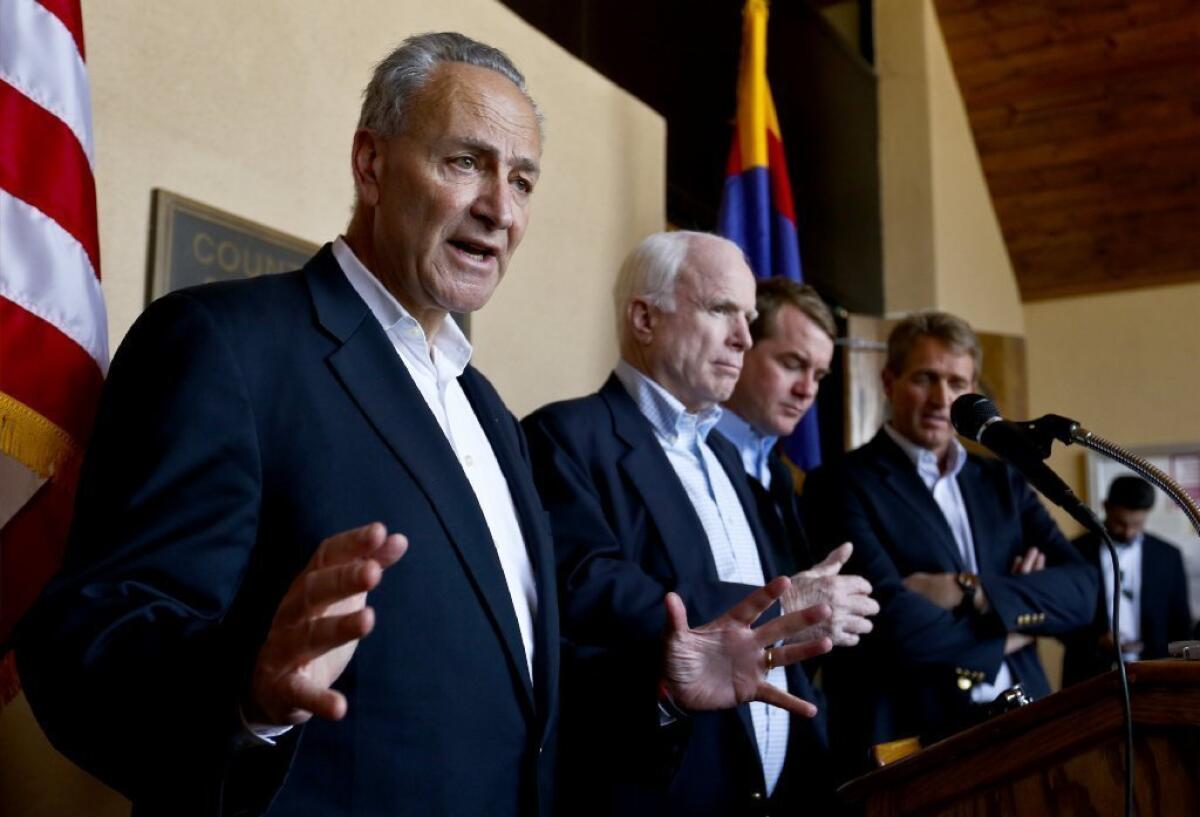A shockingly sensible immigration plan

The recent agreement between business and labor leaders on how to provide visas for nonagricultural workers in such industries as construction, hotels and restaurants is a surprising and welcome development. Such a breakthrough agreement would have been unthinkable a year ago, when the debate over comprehensive immigration reform was mired in anger and overheated preelection rhetoric.
Fortunately, stubborn partisanship has given way to wary pragmatism. As a result, members of Congress and stakeholder groups have resumed negotiations, and deals like the one reached between the AFL-CIO and the U.S. Chamber of Commerce over the weekend are possible. Under that agreement, low-skilled foreign workers may apply to come to the United States under a new W visa to work in certain industries. The number of visas issued would be tied to the U.S. unemployment rates in order to protect U.S. workers. The plan would also provide a path to citizenship for these workers and allow them to move from employer to employer.
Frankly, the plan reflects a shockingly sensible set of compromises, and we hope a similar burst of reasonableness will allow an agreement to be reached between agricultural growers and labor that would address the industry’s reliance on undocumented farmhands.
Currently, more than half of all farmworkers in the U.S. are believed to be in the country illegally. In California, growers have long complained that they can’t find Americans willing to do the work they need done or trained to harvest crops fast enough, even though they often pay above minimum wage. At the same time, those growers are reluctant to use the existing H-2A visa program, which they say is too expensive and cumbersome and requires them to predict harvest schedules and labor needs months or even a year in advance of when crops come in.
Meeting the needs of growers while protecting the rights of farmworkers won’t be easy, and the solution must be rooted in the realities of the labor market. But there is already a good blueprint to work from. The Agriculture Job Opportunities, Benefits and Security Act, first introduced in 2007, would allow farmworkers who are already here to legalize their status if they pay a fine and continue to work in the fields for at least three years, and it offers a sensible outline for overhauling the H-2A visa program to ensure that foreign workers don’t drive down wages for American workers who are employed on farms.
It is too early to tell when the bipartisan group of eight senators working on this issue will unveil a bill. But at least the question is no longer whether such legislation is even possible. Rather it is how soon we can expect a comprehensive fix to the nation’s broken immigration system.
More to Read
A cure for the common opinion
Get thought-provoking perspectives with our weekly newsletter.
You may occasionally receive promotional content from the Los Angeles Times.










